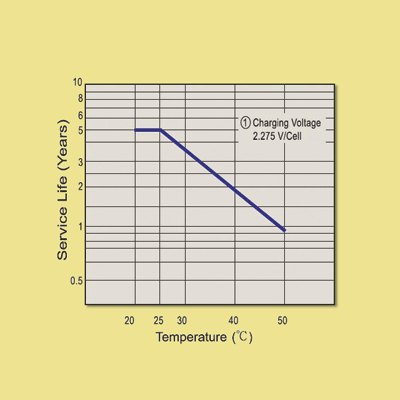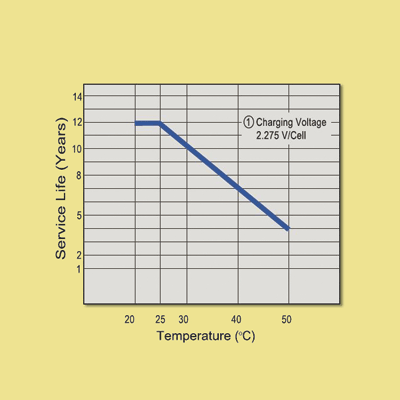Batteries are at the heart of every UPS and the cost of ownership may be a hidden issue
BY MICHAEL A. STOUT
Falcon Electric
Irwindale, CA
http://www.falconups.com
Present-day uninterruptible power supplies (UPSs) under 10 kVA and their battery technologies are the largest UPS market segment. They make up the bulk of the UPS units installed worldwide for business, industrial, scientific, IT, and home applications.
Since the UPS market is very large, the UPS business has become very competitive, with a large number of domestic and international UPS manufacturers to choose from. Unfortunately, the selection is so large that consumers off all types, from a scientific laboratory to automated production, are often misled into buying a UPS on price alone, without fully understanding what they are buying or what the available options are.
For home users this is typically not a problem, as they simply want to back up their home computer long enough to allow the operating system to perform an orderly shutdown. For the other applications, users face a costly learning experience if they buy a UPS on cost alone. Before considering the purchase of a UPS, the user must know about the basic UPS design types.
UPS designs
There are three basic UPS designs: off-line, line-interactive, and on-line. They provide three different levels of backup and power protection.
Off-line
The off-line UPS is the lowest cost and can provide basic battery backup and limited surge protection only. In every case, the unit is designed around low cost. Therefore in battery mode it does not provide a true sine-wave output and instead it has a very distorted quasi-sine and even square-wave outputs. When in utility power mode, the utility power is fed directly to the UPS output without any power conditioning.
Line-interactive
The line-interactive UPS is very similar to the off-line, except it has an internal automatic tap switching transformer circuit (automatic voltage regulation or AVR) that attempts to maintain some output voltage regulation in gross steps. Depending on the cost of the line-interactive UPS, the battery mode output waveform could be quasi-sine-wave or true sine-wave in some cases.
Again, when in utility power mode, the utility power is fed directly to the UPS output, without any power conditioning. A good quality line-interactive UPS will cost substantially more than an entry level line-interactive model. This type of UPS is best suited for noncritical workstation based applications.
On-line
The on-line UPS is the best-grade UPS. When powered by the utility source, it converts the ac to a regulated dc, thereby removing most unwanted utility power problems. It then regenerates new, clean true sine-wave output power 100% of the time, whether operating in battery or utility modes.
The on-line UPS acts like an electronic firewall between the utility power and connected equipment. It is the best choice for use in any medium to large business, industrial, scientific, or IT application. The on-line UPS is the only truly generator-compatible UPS since, unlike other UPS types, it eliminates generator frequency shifts and voltage sags. As the on-line UPS incorporates a continuous duty inverter, it supports the connection of extended runtime battery packs, allowing runtimes over several hours.
Battery overview
Batteries are at the heart of every UPS and due to the large number of UPS units typically installed in a medium to large corporation, the cost of ownership may be a hidden and costly issue. Typically, the referenced UPS topologies use valve regulated sealed lead-acid (VRLA) type batteries as they provide the highest power density at the lowest cost.
Other battery types like lithium-polymer are far too expensive at this time. Until recent technology developments, the VRLA battery used in a UPS typically had a three to five year service life, if maintained in a 77°F environment and properly charged.
Besides not maintaining the battery at the proper state of charge, heat is the greatest enemy of VRLA batteries. Per manufacturer specification, should a three to five year life battery be installed into a 122°F environment, its service life will be shortened to less than one year.
A real-world example
As a real-world example, with the average UPS using from three to twenty VRLA batteries, a toll road company in the southwest would need many UPS units installed in toll booths, resulting in exceedingly high cost of ownership. The same is true for all types of production applications, where hundreds of UPSes are deployed and between the cost of the batteries and the manpower involved with changing batteries every other year becomes a drain on resources. Ironically, a UPS is supposed to increase the reliability of the system it is powering but a weak battery can spell disaster (see Figs. 1 and 2 ).

Fig. 1. Trickle (or float) service life for 3 to 5-year-rated batteries.

Fig. 2. Trickle (or float) service life for 10 to 12-year-rated batteries.
The VRLA battery service life can be shortened further by excessive discharge and recharge cycles. Offline and line-interactive UPS models can excessively switch to battery mode if installed in locations where utility voltage or frequency regulation is poor. This is not the case with double-conversion on-line UPS models as they only draw power from the batteries when the utility voltage is excessively low, or is lost completely. As the on-line UPS typically costs a bit more, the battery chargers often are of a better design and better maintain the batteries charge state, resulting in a longer service life.
VRLA battery technology is advancing, so look for a UPS companies that offers products using newly designed batteries having a higher temperature rating and up to 12–year service life. Not only do these batteries reduce the number of battery replacements when installed into a 77°F environment, but per manufacturer specifications, the batteries will have a four–year service life when used in a 122°F environment.
A standard battery lasts less than a year at that temperature. These batteries are ideal for high temperature applications. A few UPS manufacturers have taken implementation of these batteries one step further by thermally insulating them inside of a thick wall plastic enclosure. This thermally insulates the batteries, adding to their service life.
The inside of enclosed equipment racks are often packed with heat generating equipment which can raise the internal temperature of the rack to very high levels. Most UPS products designed for rackmount use secure their internal UPS batteries directly against the bottom surface of the UPS chassis. As the internal rack temperature increases, it elevates the temperature of the metal chassis surfaces, which is then conducted directly to the internal batteries, reducing their service life.
Proper UPS storage
Proper UPS storage is another factor that can affect battery life. When the UPS is disconnected and not used for several months, the internal VRLA batteries will self-discharge. If stored for over six months they can become overly discharged to the point they cannot be recharged again, requiring a premature battery replacement. It is a good practice when storing a UPS to plug it in and recharge the batteries every four months to prevent this problem.
Dispose or recycle
Lastly, when replacing all VRLA batteries always dispose or recycle the spent batteries in accordance with all local and federal laws and regulations. VRLA batteries are classified as hazardous waste, but the good news is they can be almost entirely recycled.
With the microprocessor controlling virtually every computer and piece of today’s electronic equipment, the selection of an on-line UPS assures the highest level performance and protects against the greatest number of potential power problems. This ensures a successful integration even with the most power sensitive equipment. It also provides reliable, worry-free operation of the equipment and eliminates costly trial and error approaches in attempt to save a few dollars. In the case of laboratory and biomedical applications an improvement of the equipment’s accuracy if often realized.
At the time of initial UPS purchase, maximize your return on investment by selecting a brand that offers 10 to 12-year service-life batteries. When deciding where to install the UPS, select a location that will have as close to a 75°F temperature as possible. If the UPS must be installed in a location with elevated temperatures, schedule battery replacements accordingly. Think of the UPS as the insurance policy ahead of your equipment. If the equipment is a used Honda Civic and you’re a college student, maybe not so much insurance is needed. However, as a professional, any automobile you rely on to get you from point A to B demands substantially more. ■
Advertisement
Learn more about Falcon Electric





